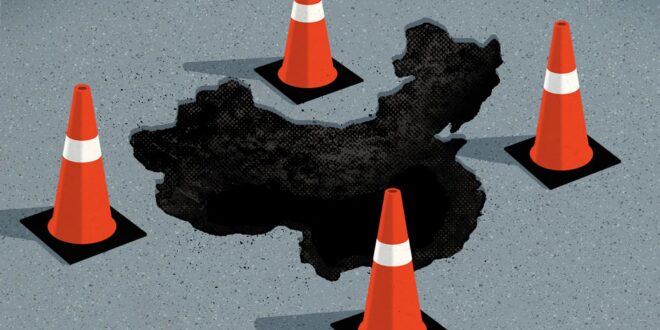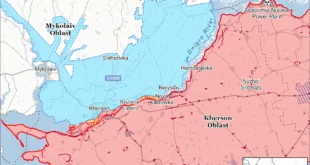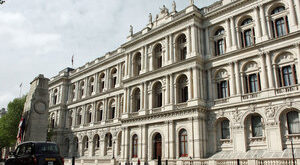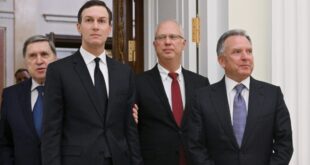The Real Toll of Beijing’s Belt and Road
This year marks the tenth anniversary of Chinese President Xi Jinping’s Belt and Road Initiative, the largest and most ambitious infrastructure development project in human history. China has lent more than $1 trillion to more than 100 countries through the scheme, dwarfing Western spending in the developing world and stoking anxieties about the spread of Beijing’s power and influence. Many analysts have characterized Chinese lending through the BRI as “debt trap diplomacy” designed to give China leverage over other countries and even seize their infrastructure and resources. After Sri Lanka fell behind on payments for its troubled Hambantota port project in 2017, China obtained a 99-year lease on the property as part of a deal to renegotiate the debt. The agreement sparked concerns in Washington and other Western capitals that Beijing’s real aim was to acquire access to strategic facilities throughout the Indian Ocean, the Persian Gulf, and the Americas.
But over the last few years, a different picture of the BRI has emerged. Many Chinese-financed infrastructure projects have failed to earn the returns that analysts expected. And because the governments that negotiated these projects often agreed to backstop the loans, they have found themselves burdened with huge debt overhangs—unable to secure financing for future projects or even to service the debt they have already accrued. This is true not just of Sri Lanka but also of Argentina, Kenya, Malaysia, Montenegro, Pakistan, Tanzania, and many others. The problem for the West was less that China would acquire ports and other strategic properties in developing countries and more that these countries would become dangerously indebted—forced to turn to the International Monetary Fund (IMF) and other Western-backed international financial institutions for help repaying their Chinese loans.
In many parts of the developing world, China has come to be seen as a rapacious and unbending creditor, not so different from the Western multinational corporations and lenders that sought to collect on bad debts in decades past. Far from breaking new ground as a predatory lender, in other words, China seems to be following a path well worn by Western investors. In so doing, however, Beijing risks alienating the very countries it set out to woo with the BRI and squandering its economic influence in the developing world. It also risks exacerbating an already painful debt crisis in emerging markets that could lead to a “lost decade” of the kind many Latin American countries experienced in the 1980s.
To avoid that dire outcome—and to avoid spending Western taxpayer dollars to service bad Chinese debts—the United States and other countries should push for broad-based reforms that would make it more difficult to take advantage of the IMF and other international financial institutions, imposing tougher criteria on countries seeking bailouts and demanding more transparency in lending from all their members, including China.
HARD BARGAINS, SOFT MARKETS
In the 1970s, the Harvard economist Raymond Vernon observed that Western investors had the upper hand when negotiating deals in the developing world, since they had the capital and know-how to build factories, roads, oil wells, and power plants that poorer countries desperately needed. As a result, they were able to strike bargains that were highly favorable to themselves, transferring much of the risk to developing countries. Once the projects had been completed, however, the balance of power shifted. The new assets could not be taken away, so developing countries had more leverage to renegotiate debt repayment or ownership terms. In some cases, contentious negotiations led to nationalizations or sovereign defaults.
Similar scenarios have played out in several BRI countries. Major Chinese-funded projects have generated disappointing returns or failed to stimulate the kind of broad-based economic growth that policymakers had anticipated. Some projects have faced opposition from indigenous communities whose lands and livelihoods have been threatened. Others have damaged the environment or experienced setbacks because of the poor quality of Chinese construction. These problems come on top of long-standing disputes over China’s preference for using its own workers and subcontractors to build infrastructure, edging out local counterparts.
The biggest problem by far, however, is debt. In Argentina, Ethiopia, Montenegro, Pakistan, Sri Lanka, Zambia, and elsewhere, costly Chinese projects have pushed debt-to-GDP ratios to unsustainable levels and produced balance-of-payments crises. In some cases, governments had agreed to cover any revenue shortfalls, making sovereign guarantees that obligated taxpayers to foot the bill for failing projects. These so-called contingent liabilities were often hidden from citizens and other creditors, obscuring the true levels of debt for which governments were liable. In Montenegro, Sri Lanka, and Zambia, China made such deals with corrupt or authoritarian-leaning governments that then bequeathed the debt to less corrupt and more democratic governments, saddling them with responsibility for getting out of crises.
Contingent liabilities on debt to state-owned enterprises are not unique to the BRI and can plague privately financed projects, as well. What makes BRI debt crises different is that these contingent liabilities are owed to Chinese policy banks rather than to private corporations, and China is conducting its debt renegotiations bilaterally. Beijing is also clearly negotiating hard, because BRI countries are increasingly opting for bailouts from the IMF, even though they often come with tough conditions, rather than trying to negotiate further relief from Beijing. Among the countries that the IMF has intervened to support in recent years are Sri Lanka ($1.5 billion in 2016), Argentina ($57 billion in 2018), Ethiopia ($2.9 billion in 2019), Pakistan ($6 billion in 2019), Ecuador ($6.5 billion in 2020), Kenya ($2.3 billion in 2021), Suriname ($688 million in 2021), Argentina again ($44 billion in 2022), Zambia ($1.3 billion in 2022), Sri Lanka again ($2.9 billion in 2023), and Bangladesh ($3.3 billion in 2023).
Some of these countries resumed servicing their BRI debts soon after the new IMF credit facilities were in place. In early 2021, for instance, Kenya sought to negotiate a delay in interest payments for a struggling Chinese-funded railway project linking Nairobi to Kenya’s Indian Ocean port in Mombasa. After the IMF approved a $2.3 billion credit facility that April, however, Beijing began withholding payments to contractors on other Chinese-financed projects in Kenya. As a result, Kenyan subcontractors and suppliers stopped receiving payments. Later that year, Kenya announced that it would no longer seek an extension of debt relief from China and made a $761 million debt service payment for the railway project.
The stakes for Kenya and the rest of the developing world are enormous. This wave of debt crises could be far worse than previous ones, inflicting lasting economic damage on already vulnerable economies and miring their governments in protracted and costly negotiations. The problem goes beyond the simple fact that every dollar spent servicing unsustainable BRI debt is a dollar that is unavailable for economic development, social spending, or combating climate change. The recalcitrant creditor in today’s emerging market debt crises is not a hedge fund or other private creditor but rather the world’s largest bilateral lender and, in many cases, the largest trading partner of the debtor country. As private creditors become more keenly aware of the risks of lending to BRI countries, these countries will find themselves caught between squabbling creditors and unable to access the capital they need to keep their economies afloat.
HIDDEN FIGURES
Beijing had multiple objectives for the BRI. First and foremost, it sought to help Chinese companies—mostly state-owned companies but also some private ones—make money abroad, to keep China’s huge construction sector afloat, and to preserve the jobs of millions of Chinese workers. Beijing also undoubtedly had foreign policy and security goals, including gaining political influence and in some cases securing access to strategic facilities. The large number of marginal projects Beijing undertook hints at these motivations: Why else fund projects in countries with huge political risks, such as the Democratic Republic of the Congo or Venezuela?
But accusations of debt trap diplomacy are overblown. Rather than deliberately miring borrowers in debt in order to extract geopolitical concessions, Chinese lenders most likely just did poor due diligence. BRI loans are made by Chinese state-owned banks through Chinese state-owned enterprises to state-owned enterprises in borrowing countries. The contracts are negotiated directly, rather than opened to the public for bidding, so they lack one of the benefits of private financing and open procurement: a transparent market mechanism for ensuring that projects are financially viable.
The results speak for themselves. In 2009, the government of Montenegro asked for bids on a contract to build a highway connecting its Adriatic port of Bar with Serbia. Two private contractors participated in two procurement processes, but neither was able to raise the necessary financing. As a result, Montenegro turned to the China Export-Import Bank, which did not share the market’s concerns, and now the highway is a major cause of Montenegro’s financial distress. According to a 2019 IMF estimate, the country’s debt-to-GDP ratio would have been just 59 percent had it not pursued the project. Instead, the ratio was forecast to rise to 89 percent that year.
Not all BRI projects have underperformed. Greece’s Piraeus port project, which expanded the country’s largest harbor, has delivered the win-win outcomes Beijing promised, as have other BRI initiatives. But many have left countries suffering under crushing debt and wary of deeper engagement with China. In some cases, the leaders and elites who negotiated the deals have benefited, but the broader populations have not.
China’s BRI does pose problems for Western countries, in other words, but the primary threat is not strategic. Rather, the BRI creates pressures that can destabilize developing countries, which in turn creates problems for international institutions such as the IMF and the European Bank for Reconstruction and Development, to which those countries turn for assistance. Over the last six decades, Western creditors have developed institutions such as the Paris Club to deal with issues regarding sovereign default, to ensure a degree of cooperation among creditors, and to manage payments crises equitably. But China has not yet agreed to join this group, and its opaque lending processes make it hard for international institutions to accurately assess how much trouble a given country is in.
CAUTION AND PRESSURE
Some analysts have argued that the BRI is not a cause of the current debt crisis in emerging markets. Countries such as Egypt and Ghana, they point out, owe more to bondholders or multilateral lenders such as the IMF and World Bank than to China and are still struggling to manage their debt burdens. But such arguments mischaracterize the problem, which is not simply bad BRI debt in the aggregate but also hidden BRI debt. According to a 2021 study in the Journal of International Economics, approximately half of China’s loans to the developing world are “hidden,” meaning that they are not included in official debt statistics. Another study published in 2022 by the American Economic Association found that such debts have resulted in a series of “hidden defaults.”
The first problem with hidden debt occurs during the buildup to a crisis, when other lenders do not know that the obligations exist and are therefore unable to accurately assess credit risk. The second problem comes during the crisis itself, when other lenders learn of the undisclosed debt and lose faith in the restructuring process. It does not take much hidden bilateral debt to cause a credit crisis, and it takes even less to shatter trust in efforts to resolve it.
China has taken some measures to ease the strain of these debts, hidden and otherwise. It has provided its own bailouts to BRI countries, often in the form of currency swaps and other bridge loans to borrower central banks. These bailouts are accelerating, with one working paper published in March 2023 by the World Bank Group estimating that China extended more than $185 billion in such facilities between 2016 and 2021. But central bank swaps are far less transparent than traditional sovereign loans, which further complicates restructurings.
China’s preference for not disclosing lending terms and renegotiating bilaterally may help protect its economic interests in the short term, but it can also derail restructuring efforts by undermining the two foundational elements of any such process: transparency and comparability of treatment—the idea that all creditors will share the burden equitably and be treated the same.
It does not take much hidden bilateral debt to cause a credit crisis.
The IMF’s policies for lending into murky distressed debt situations have evolved over decades, growing more flexible so that the fund can lend into and “referee” debt restructurings. But although the IMF was well suited to this role when the creditors were Paris Club members and even sovereign bond hedge funds, it is not well positioned to deal with China. Moreover, the mechanisms that the IMF and Western creditors have developed to alleviate the worsening sovereign debt crisis among BRI countries are insufficient. In 2020, the G-20 established a Common Framework intended to integrate China and other bilateral lenders into the Paris Club’s restructuring process with IMF oversight and support. But the Common Framework has not worked. Ethiopia, Ghana, and Zambia have all applied for relief through the mechanism, but negotiations have been extremely slow, and only Zambia has reached a deal with creditors. The terms of that agreement, moreover, were underwhelming for Zambia, Zambia’s non-Chinese official creditors, and, most important, for the prospects of future restructurings.
Under the deal, reached in June 2023, Zambia’s official creditor debt was revised down from $8 billion to $6.3 billion after a major BRI loan was reclassified as commercial (even though it was covered by Chinese state-backed export credit insurance). Furthermore, the agreement may only temporarily reduce Zambia’s interest payments on official debt. If the IMF concludes that Zambia’s economy has improved at the end of its program in 2026, the country’s interest on official credits will ratchet back up. That creates a terrible set of incentives for the Zambian government, whose cost of capital will increase if its creditworthiness improves and could cause friction between the IMF and China down the road. These results are not surprising: the Common Framework provides the carrot of IMF support but lacks a stick to deal with a recalcitrant creditor, especially one with China’s geopolitical leverage over borrowers.
Another initiative aimed at easing the brewing BRI debt crisis is the IMF’s Lending Into Official Arrears program. In theory, the program should allow the IMF to continue lending to a distressed borrower even when a bilateral creditor refuses to provide relief, but it, too, has proven ineffective. In Zambia, China holds more than half of official debt, making it extremely risky for the IMF to extend additional financing. Even in other cases in which China does not hold a majority of official debt, China simply has too much economic leverage over borrowers relative to the IMF, and the fund’s staff and leadership will always err on the side of caution when attempting to resolve conflicts between member states.
As long as the IMF continues to exercise such caution, Beijing will continue to use its leverage to pressure the fund into supporting borrowers even when it does not have complete visibility into their indebtedness to China. To prevent future debt restructurings from becoming as challenging as the ongoing ones in Ethiopia, Sri Lanka, and Zambia, the IMF will need to undertake substantial reforms, strengthening its enforcement of transparency requirements for member states and taking a much more cautious approach to lending into heavily indebted BRI borrowers. Such a course correction is unlikely to originate from within the IMF; it will have to come from the United States and other important board members.
SLOW LEARNERS AND FAST LENDERS
Some analysts have argued that China is going through a “learning process” as a debt collector, that Chinese lending institutions are fragmented, and that the process of building understanding, trust, and organized responses to sovereign debt crises takes time and cooperation. The implication is that Western creditors should be flexible while Beijing grows into its new role—and that the IMF should keep cutting checks in the meantime.
But patience will not solve the problem because China’s incentives (and those of any other holdout creditor) are not aligned with those of the IMF or creditors who wish to expeditiously negotiate the restructuring of debts. This is why the IMF must strictly enforce requirements that oblige member states to be transparent about their debt obligations.
Even if the Chinese lending landscape is fragmented, moreover, the IMF and the members of the Paris Club should treat the Chinese government as capable of organizing its state-owned entities and providing a state-level response in debt restructurings. Beijing appears to be capable of doing so in bilateral debt renegotiations. In 2018, for instance, Zambia announced plans to restructure its bilateral debt with China and to delay ongoing BRI projects because of debt concerns. But after meeting with China’s ambassador to Zambia, then President Edgar Lungu reversed course and said there would be no disruption of the Chinese-financed projects, suggesting that Beijing had been able to coordinate with a number of Chinese state-owned enterprises and state-owned banks to avert a blowup. If China could do so bilaterally, it should be able to do so multilaterally, as well.
One drawback of adjusting the IMF’s approach to the BRI debt crisis is that it would slow the fund down, preventing it from responding quickly to new crises. This is clearly a tradeoff. The IMF cannot act as both an unequivocal lender of last resort and an enforcer of the norms of transparency and comparability. It must be able and willing to withhold credit assistance when its requirements are unmet. The non-Chinese taxpayers who fund the IMF should not see their money pay for bad Chinese lending decisions.
GOOD FOR THE IMF, GOOD FOR THE WORLD
Members of the G-7 and the Paris Club have several options for addressing the BRI debt crises. First, the United States and other bilateral creditors could assist BRI borrowers in coordinating with one another. Doing so would improve transparency, enhance information sharing, and enable borrowers to negotiate with Chinese creditors as a group instead of bilaterally. China’s approach of conducting renegotiations secretly and bilaterally disadvantages BRI borrowers, as well as other creditors, including the IMF and the World Bank.
Second, the IMF should establish clear criteria that distressed BRI borrowers must meet before they can receive new credit facilities from the fund. These criteria should be agreed on by a number of IMF board members in order to insulate the fund’s staff and leadership from conflict with China, which is also an important board member of the IMF. Transparency related to BRI debts is not the only area that these criteria should address. The IMF should also set much clearer criteria regarding which BRI loans will be considered official credits, as opposed to commercial ones. China has claimed that some major BRI loans are commercial rather than official loans because they are priced at market rates, even though they come from state-owned lending institutions such as the China Development Bank. The IMF has considered these classification questions case by case. But this approach is proving unworkable, since it enables scenarios such as the Zambian one in which a sizable portion of official debt suddenly becomes commercial overnight, enabling China to seek better terms. A continued ad hoc approach by the IMF will likely lead to similar gamesmanship and conflict in future restructuring negotiations. The IMF should simply clarify which BRI lending institutions will be considered official creditors in any restructuring process.
Under some recent IMF programs, borrowers have continued to service BRI debts through their state-owned enterprises while receiving sovereign debt relief at the national level. The only way to prevent this behavior is for the IMF to require borrowers to identify and commit to including all state-owned enterprise debts with sovereign guarantees in restructuring processes. Otherwise, BRI lenders will simply pick and choose which state-owned enterprise loans they would like to include in restructurings based on whether they think they can get a better deal through restructuring or through a bilateral renegotiation on the side.
Requiring distressed countries to meet these criteria before they get new credit facilities would make the IMF less agile and limit its ability to respond quickly to balance-of-payments crises. But it would give borrowers and the sovereign finance industry much-needed clarity and certainty on the requirements for IMF intervention. It would also insulate IMF staff and leadership from recurring conflicts with China during every debt restructuring.
Some will no doubt frame such reforms as “anti-China.” In truth, however, they are simply the steps necessary to protect the principles of transparency and comparability in sovereign debt restructuring. Western countries must be able to stand up for key elements of the rules-based international order when they are imperiled while still cooperating with China, which is an important member of that order.
Finally, these reforms are the only way to protect the IMF from the fallout of the BRI debt crisis. Conflicts over BRI debt will continue to impede debt-relief efforts, undermining both the economic health of indebted developing countries and the effectiveness of the IMF. Only a reformed IMF can reverse the damage—to developing countries and to itself.
 Eurasia Press & News
Eurasia Press & News




